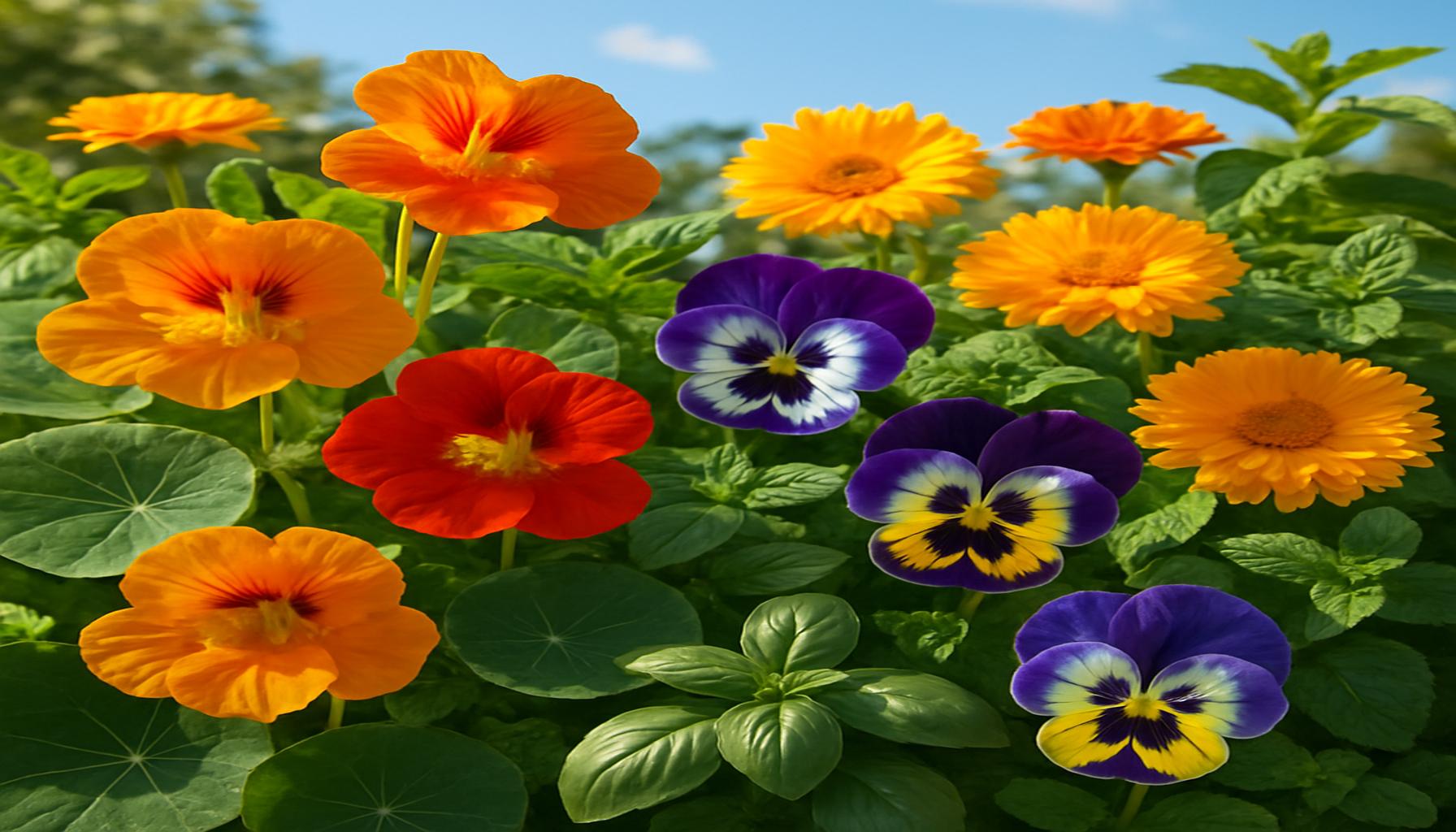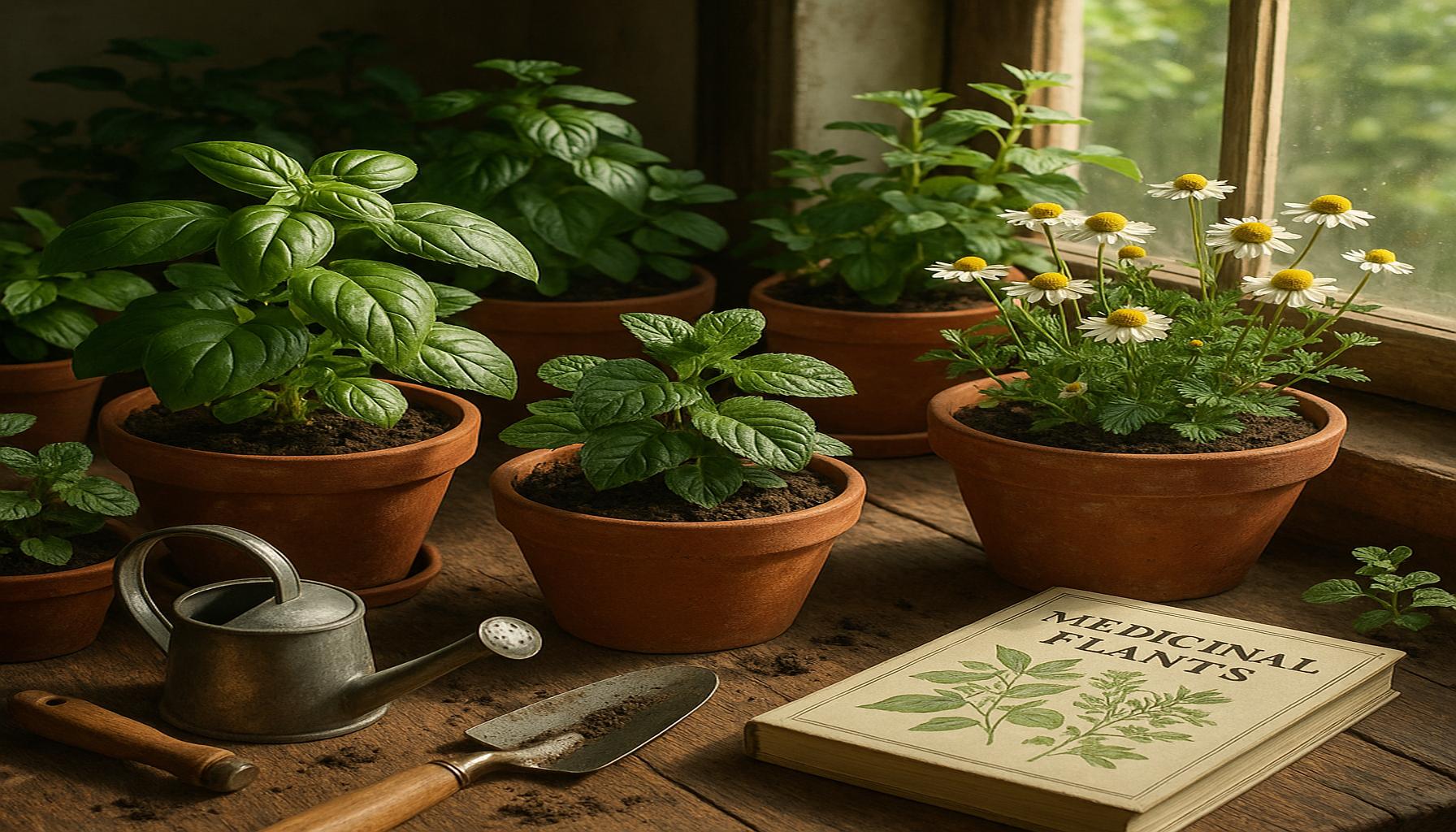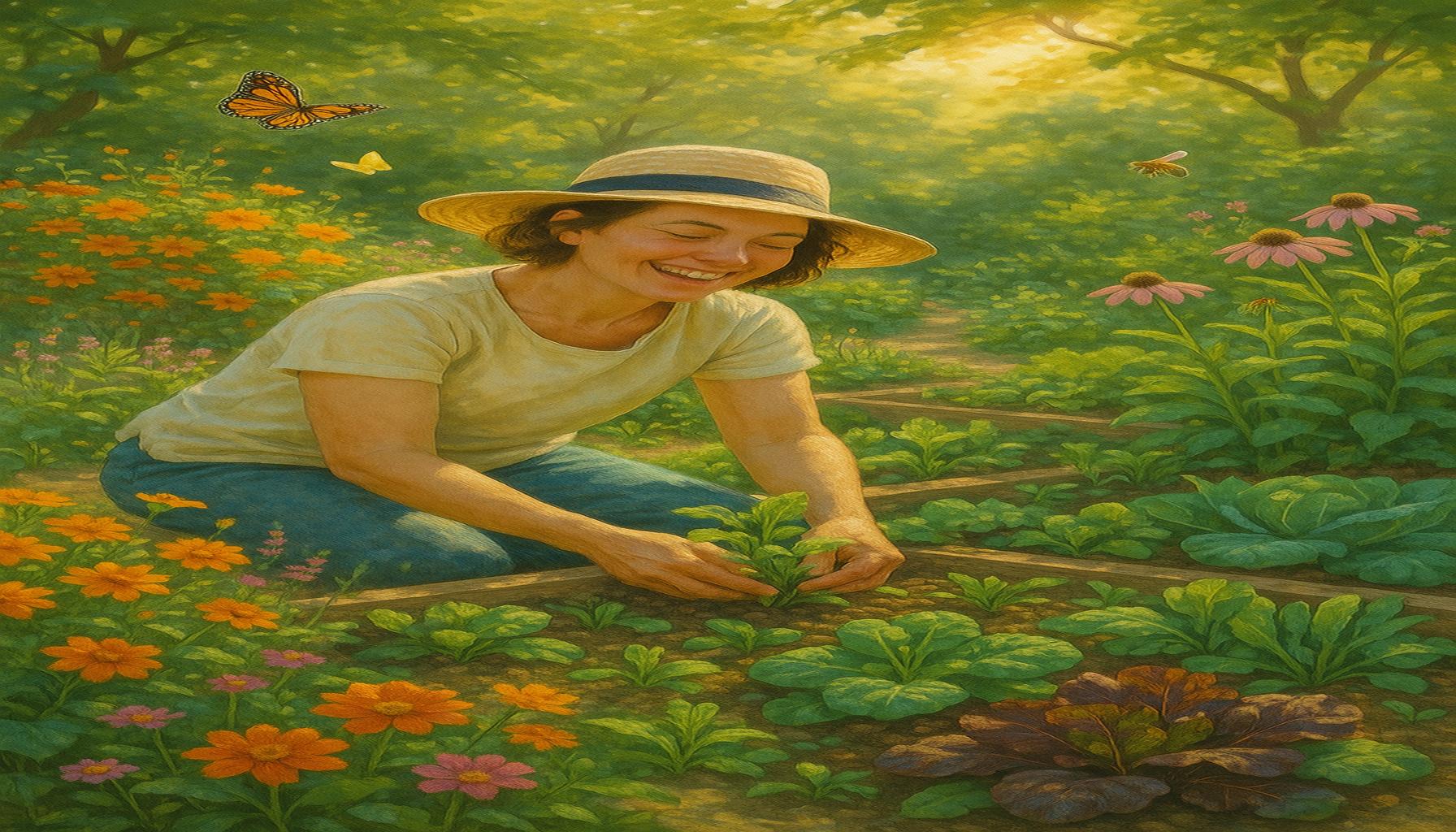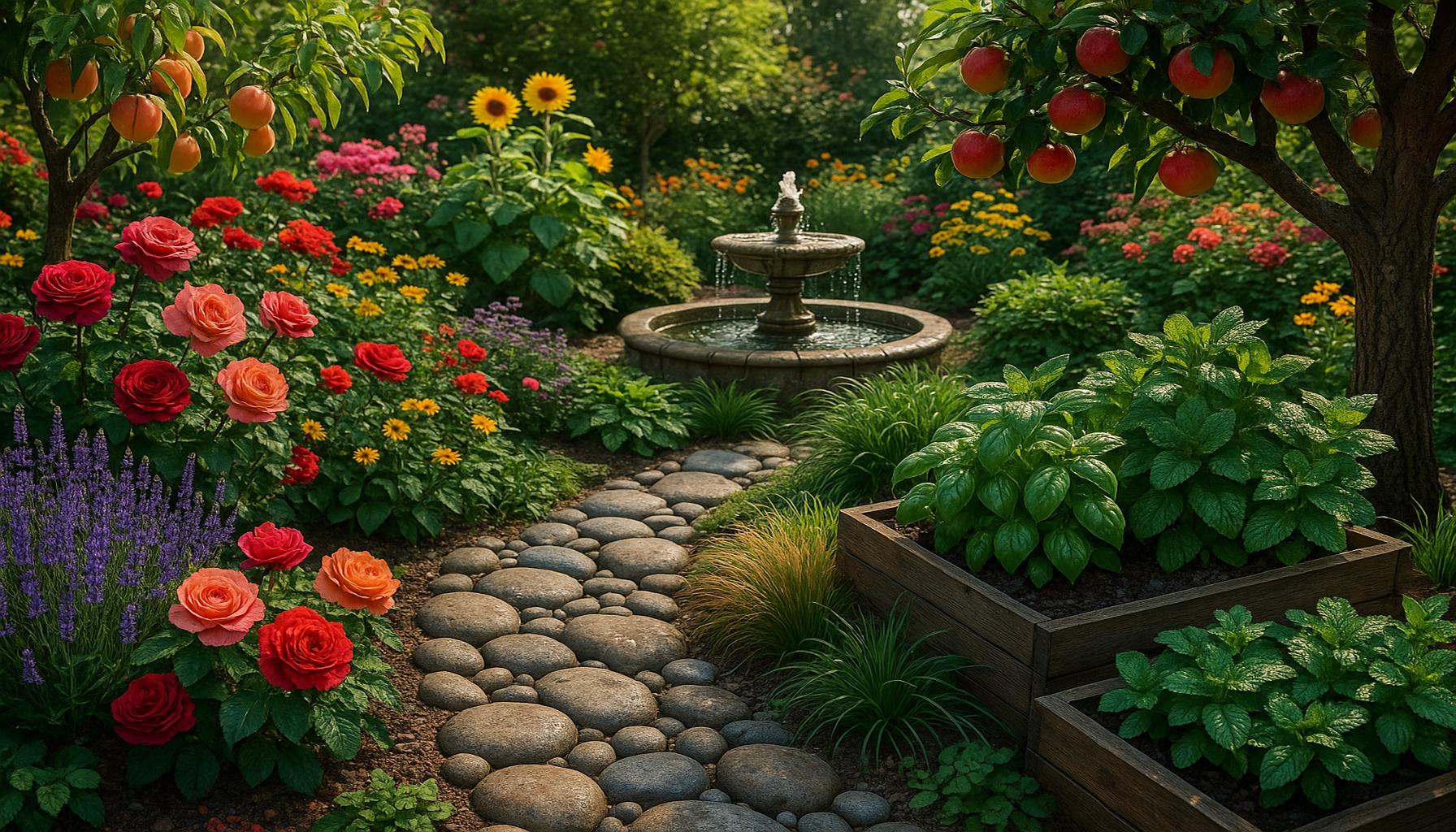Growing Edible Flowers: How to Combine Beauty and Flavor in Your Garden

The Charm of Edible Flowers in Your Garden and Kitchen
Imagine strolling through your garden, where vibrant flowers not only please the eye but also tantalize the taste buds. Growing edible flowers offers a unique way to enhance your gardening experience, creating spaces that are as beautiful as they are delicious. These aesthetically pleasing blooms can be a delightful and nutritious addition to your meals, adding both color and flavor.
Many edible flowers are not just visually striking; they each possess distinct flavors that can elevate your culinary creations. For example, the Calendula flower, with its bright yellow-orange petals, is often likened to saffron, adding a rich color and a slightly spicy flavor to salads, soups, and rice dishes. Consider tossing a handful into a mixed greens salad for an eye-catching twist that also provides health benefits, as Calendula has anti-inflammatory properties.
Violas, known for their delicate appearance, come in various hues including purple, yellow, and white. They add a subtly sweet, floral note to dishes, making them perfect for garnishing desserts and drinks. A simple scoop of vanilla ice cream adorned with fresh Violas not only looks exquisite but also offers a delightful surprise for your palate.
Another excellent choice is the Nasturtium, a vibrant flower that is both visually stunning and uniquely flavorful. Its leaves and flowers deliver a peppery kick similar to arugula, making it a fantastic addition to salads, pestos, and sandwiches. Using Nasturtiums in your dishes not only enhances taste but also adds a splash of color that can make any meal a feast for the eyes as well.
Don’t overlook the classic Roses, which can transcend their typical use in bouquets. Edible rose petals bring an aromatic sweetness to jellies, desserts, and even beverages like herbal teas or cocktails. Their scent and flavor can evoke a garden party atmosphere, transforming any gathering into a memorable occasion.
Not only do these flowers serve aesthetic purposes, but they also enrich your meals with unique flavors. However, incorporating them into your garden requires an understanding of their specific growing needs. Most edible flowers thrive in well-drained soil and require plenty of sun—usually six to eight hours a day. Others, like Nasturtiums, are particularly resilient and can even handle poorer soil conditions, making them an ideal option for beginner gardeners.
If you’re searching for ways to combine beauty and flavor in your culinary endeavors, the journey into growing edible flowers is a rewarding venture. Discovering how to cultivate and use these stunning plants effectively in your kitchen could be a game-changer for your cooking style. Embrace the charm of edible flowers and let your garden come alive with colors, flavors, and inspiring culinary adventures.
DISCOVER MORE: Click here to get started on your sustainable garden!
Choosing the Right Edible Flowers
Before you dive into growing edible flowers, it’s essential to know which varieties are not only safe to consume but also suited to your local climate and gardening conditions. The United States boasts a myriad of options, adaptable to various regions and growing seasons. Here’s a look at some popular choices that make for stunning and flavorful additions to your garden:
- Calendula: As mentioned earlier, these cheerful flowers not only contribute a vibrant splash of color but also have a slightly spicy flavor. They thrive in well-drained soil and can tolerate cooler temperatures, making them ideal for early spring planting.
- Nasturtium: Known for their bright hues, these flowers are remarkably easy to grow and can flourish in poorer soil conditions. Their peppery flavor pairs wonderfully with mixed greens, adding an exciting punch to your salad.
- Chive Blossoms: The delicate lavender flowers of chives bring a mild onion flavor to dishes. They can be snipped fresh and sprinkled over soups or salads, merging aesthetics with taste. Plus, they are perennial, returning each year with minimal effort.
- Bee Balm: A favorite among pollinators, this flower offers a minty flavor that can be used in teas or as a garnish in salads. Bee Balm prefers partial shade, making it an excellent choice for those with gardens that don’t receive full sunlight.
- Squash Blossoms: These vibrant, yellow-orange flowers emerge from squash plants and are a seasonal delicacy. Filled with cheese and lightly fried, they make for a savory appetizer that’s sure to impress guests.
When selecting edible flowers, always consider the growing conditions in your garden. Some flowers, like Nasturtiums, thrive and produce bountiful blooms even in less-than-ideal soil. Others, like Squash Blossoms, are best incorporated into a broader vegetable gardening plan, which often yields a two-for-one benefit: delightful florals and nutritious produce.
In addition to climate and soil considerations, it’s crucial to understand the maintenance requirements for your selected flowers. Edible flowers often require a good watering schedule and basic care such as deadheading (removing spent flowers), which encourages new growth and prolongs the blooming period. Furthermore, keeping an eye out for pests is essential; organic options like insecticidal soap can keep your blooms healthy without compromising their edibility.
Adopting best gardening practices ensures that your edible flowers not only flourish but also remain free from harmful chemicals. Regularly monitoring plant health and practicing crop rotation can minimize pest infestations and promote nutrient-rich blooms.
As you journey into growing edible flowers, remember to celebrate the unique flavors and stunning aesthetics they offer. With careful planning and the right choices, your garden can transform into a culinary haven that captivates both the senses and the imagination. The next step is to explore how to cultivate these delightful specimens successfully—and here, creativity is your ally.
| Advantages | Details |
|---|---|
| Aesthetic Appeal | Edible flowers bring vibrant colors and unique shapes that enhance garden beauty and attract pollinators. |
| Culinary Versatility | These flowers can be used in salads, desserts, and beverages, adding flavor and visual interest to dishes. |
| Nutritional Benefits | Edible flowers are often rich in vitamins and antioxidants, contributing positively to a healthy diet. |
| Environmental Impact | Growing these plants can support local ecosystems by attracting bees and butterflies, essential for pollination. |
Combining beauty and flavor through the cultivation of edible flowers creates a sensory-rich gardening experience. By selecting various species like nasturtiums, pansies, and calendula, you can explore their diverse flavors and characteristics, making dishes visually stunning and flavorful. Moreover, the addition of these flowers to your garden not only enhances aesthetics but also contributes to biodiversity and supports local wildlife. As you delve into this world, embrace the creativity of culinary uses—infusing local cuisine with fresh, homegrown ingredients can be rewarding. Consider how the layering of flavor and color through edible blooms can transform your culinary adventures while promoting a sustainable gardening practice.
DIVE DEEPER: Click here to learn more
Growing and Harvesting Edible Flowers
Once you’ve selected the perfect edible flowers for your garden, the real fun begins with growing and harvesting them to fully appreciate their beauty and flavor. Each flower variety has its unique growing habits and needs, making understanding these factors key to a successful harvest.
To start, attention to soil preparation is critical. Edible flowers generally flourish in well-drained, nutrient-rich soil. Before planting, it’s advisable to amend your soil with organic compost or well-rotted manure, which not only supplies essential nutrients but also improves soil structure. For flowers like Chive Blossoms and Nasturtiums, a slightly acidic to neutral pH of around 6.0 to 7.0 yields optimal growth.
In terms of planting, timing is crucial. Many edible flowers thrive when sown directly into the garden bed after the last frost. However, some can be started indoors and transplanted outside as young seedlings, offering a head start on the growing season. For instance, Squash Blossoms should be planted in late spring when the soil is warm, while Calendula can tolerate early sown seeds in cooler soil.
As your flowers begin to grow, implement a consistent watering regime. While most edible flowers appreciate regular moisture, overwatering can lead to root rot. A general rule is to water deeply but infrequently, allowing the soil to dry slightly between sessions. This encourages deep root growth and more resilient plants.
Additionally, fertilization plays a crucial role in ensuring robust flowering. Organic fertilizers high in potassium, such as fish emulsion or a balanced 5-10-10 formula, can support blooming and overall plant health. Applying fertilizer when the flowers start budding can particularly enhance flavor and appearance, producing blooms that not only taste wonderful but are also visually stunning.
To maximize your harvest, it’s essential to know the right time to harvest your edible flowers. Ideally, flowers should be gathered in the morning when their petals are at their freshest—just after the dew has dried. This not only enhances the flavor but retains their vibrant colors. For flowers like Nasturtiums and Bee Balm, pick only fully opened blooms, avoiding any buds or wilting petals, which may not have the best taste.
When it comes to preserving your harvest, consider experimenting with various preservation methods. Edible flowers can be stored in the refrigerator for a short time, but you can also freeze, dry, or even candy them for longer shelf life. Candied flowers, particularly, make an artistic and flavorful addition to cakes and desserts, allowing you to extend your culinary creativity.
Involving yourself in the process of growing and harvesting edible flowers offers not just flavor but a deeper connection to your garden. Each bloom holds the potential for culinary exploration, inviting you to blend aesthetics with palate in ways that are limited only by your imagination. Whether used fresh, dried, or preserved, edible flowers can elevate your meals and cocktails, allowing you to delight friends and family in unique culinary experiences.
DISCOVER MORE: Click here to enhance your communication skills
Conclusion: Embracing the Aesthetic and Culinary Potential of Edible Flowers
In the vibrant world of gardening, growing edible flowers stands out as a delightful fusion of beauty and flavor. From the aromatic Chive Blossoms to the colorful Nasturtiums, each variety offers an opportunity not only to please the eye but also to enhance culinary creations. By understanding their unique growing requirements, you can cultivate a flourishing garden that serves as a feast for both sight and taste.
The journey doesn’t end with planting; it extends into the art of harvesting and preserving your flowers. As you gather blooms at their peak, you unlock a world of flavors that can elevate your dishes and cocktails. The act of preparing these blooms—whether they are freshly sprinkled on salads, infused in syrups, or transformed into stunning garnishes—adds an intriguing layer to your culinary repertoire.
Moreover, engaging with edible flowers fosters a deeper connection with the natural world, inspiring creativity and experimentation in your kitchen. As interest in garden-to-table practices grows, edible flowers represent a sustainable choice that aligns well with culinary trends in the United States, such as farm-to-fork dining.
As you continue to explore the vast array of edible flowers, consider integrating them not only into your meals but into your social gatherings, celebrations, and even your everyday life. Their allure is boundless, promising to transform ordinary dishes into extraordinary experiences. So, take the plunge into the enchanting art of growing edible flowers, and let your garden bloom with possibilities that tantalize both the palate and the eye.


